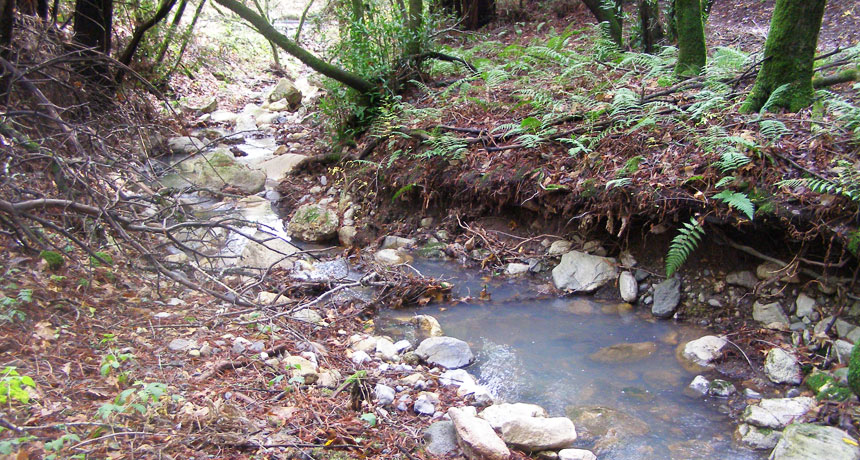South Napa earthquake revived bone-dry streams
Shaking freed groundwater trapped in nearby hills

QUENCHING QUAKE The South Napa earthquake in August caused groundwater from nearby hills to flow through previously dry streambeds such as Arroyo Seco Creek (shown here before the recent drought), new research suggests.
Anlace/Wikimedia Commons (CC BY-SA 3.0)







